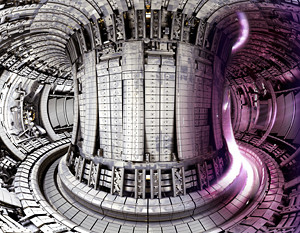Energy
Energy is an essential and expensive component of modern life, and how we generate it has huge effects on the environment. Our limited current investment in energy research doesn’t reflect the importance of improving it.
Civilisation depends on its supply of energy to function: we in the UK spend around £2200 per capita fuelling our cars, homes and factories. Energy research, by comparison, receives around £10 per person per year. That’s less than 0.5% of energy spending.

There’s a pretty strong economic case for scientific research into energy sources: the UK’s per capita energy spend has increased from £1300 per capita in 1997 to £2200 in 2011. This 60% increase has been driven largely by factors beyond our control: we depend on fuels whose prices are highly volatile due to global supply and demand, and market speculation. If we’re confident that science can make our energy even 0.5% cheaper in the long run, it’s worth investing significantly more than the £10 we do at present.
In addition, the fossil fuels that provide the majority of our energy are both finite, and damaging to the environment. To avoid dangerous (and expensive) climate change, we need to find new ways to either generate power without emitting carbon dioxide or sequester the carbon dioxide we do emit. These new or improved power sources will be made cheaper and more efficient through scientific research.
Nuclear fusion
To focus on one technology in particular, we spend £1.20 per capita—a mere 0.05% of our spend on energy—researching nuclear fusion. Fusion is a potential source of near-infinite, pollution-free energy, and the principles have already been proved. The JET experiment, based in Oxfordshire, has successfully generated 16 MW of power from fusion…albeit for less than a second. How far away is practicable nuclear fusion for electricity production? Cynics often joke that it has been thirty years away for the last thirty years—perhaps, however, given that the worldwide fusion budget is less than $1 per person per year, that’s not such a surprise.
Rather than a number of years, it makes more sense to think of fusion as a number of pounds, dollars or person-years’ work away: the more we invest in nuclear fusion now, the sooner we’ll crack it.
Whilst no number of experiments can guarantee that fusion will be able to generate affordable electricity, we do have a plan. The next big project in fusion research is a massive, collaborative experimental reactor called ITER, which has a budget of £13 billion, and should be showing results by the mid-2020s. This will be followed up by a similar scale reactor, called DEMO, designed to use the technology from ITER to actually generate electricity. ITER and DEMO will require other scientific support; for example, we need to test the new materials needed for long-term use inside a fusion reactor. Assuming all of this goes to plan, we could have nuclear fusion working after investing about £60 billion.

Though that might sound like an unimaginable quantity of cash, there are also a lot of people in the world: the population of the ‘high-income countries’ is just over 1.1 billion. This means we could develop fusion with a one-off payment of £50 each. In fact, the ITER collaboration represents over half of the world’s population, meaning it could be even cheaper than that: around £16 per head. It’s probably fairer if the rich countries pay a larger share of that, but still: I’d put my £50 on the table right now.
Of course, it’s not quite as simple as that: if a huge international collaboration clubbed together and wrote fusion researchers a cheque for £60 billion, we couldn’t have fusion next week; it would take time to build the labs, train new scientists to work in them and do the experiments to find out what works. But there’s a pretty compelling case that more investment would bring the results in faster. Plus, that means we don’t even need to pay that £50 each in one hit: we get a few years to scrape it together. (For more on making sense of the cost of large research projects, see the Big science page.)
Understanding fusion and developing it into a power source has only been possible thanks to foundations laid by nuclear physics and astrophysics, and we turn to this ‘blue-skies research’ in the next section.